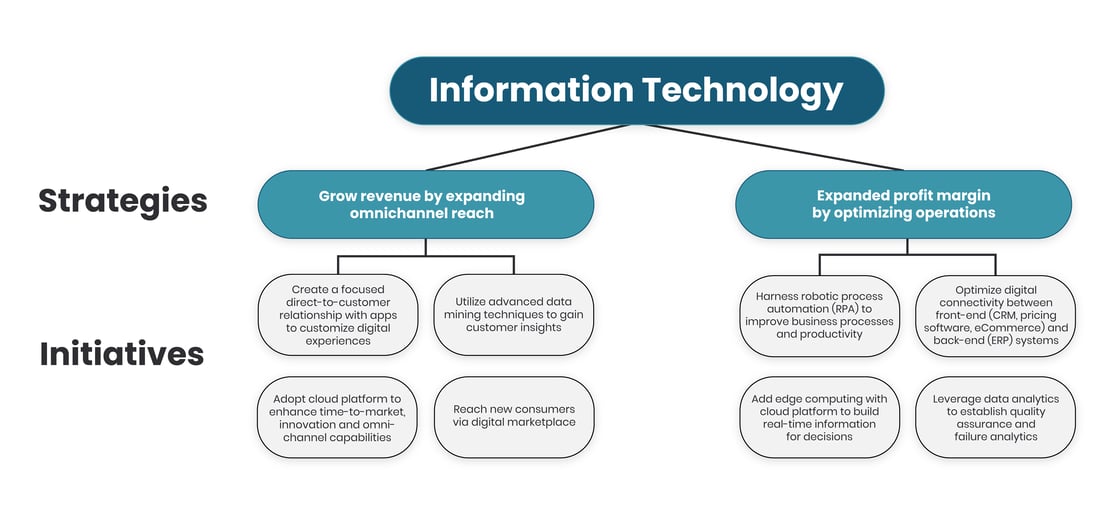A VALUE-BASED SALES STRATEGY FOR CALLING ON TECHNOLOGY EXECUTIVES
Technology executives invest in new solutions to seize opportunities and solve problems that help better manage all parts of a business. Therefore, to sell to these executives, it's not enough to just understand their needs; you need an understanding of the other buying stakeholders they work with and how those pieces fit together if technology plus other functions can deliver on company goals.
This piece aims to help sales organizations better sell to technology executives by providing examples of the strategies, initiatives, and operational KPIs that they are focused on to help manage revenue growth and profitability.
STRATEGIES AND INITIATIVES TO GROW REVENUE
When Technology Executives are looking for a new solution, they want to know how it will help them achieve their company-wide goals. This means that sales organizations must be able to articulate the value of their solution in terms of how it will help Technology Executives meet their KPIs.
Below see examples of key strategies Technology Executives are focused on, and the initiatives you can speak to that help achieve those strategies.
(Click to view larger in a separate window)
OPERATIONAL KPIS USED TO MEASURE THE SUCCESS OF THESE INITIATIVES
Here are examples of the operational KPIs you should focus on when speaking to the initiatives that drive these core strategies for Technology Executives.
- IT expense
- IT projects completed on time and on budget
- IT allocated for growth/transformation of the business
- Backoffice expenses
- Online sales
- Custom retention
- New customers
10 QUESTIONS TO ASK
Here are questions you can ask to help start the conversation:
-
How are you implementing a "mobile-first" strategy?
-
How are you improving efficiencies across all processes, operations, and plants to eliminate waste? Are your processes continually re-evaluated, tracked, and refined?
-
How are you investing in "direct to consumer" initiatives as both a means to generate revenue and acquire consumer data and trial innovative ideas?
-
How are you restructuring your internal processes and technology architecture to quickly connect/integrate/remove third parties as you become part of a consumer-centered ecosystem?
-
How are you using analytics and automation to "follow" customers through the full consumer lifecycle? Are you exploiting these insights to develop new features and services that anticipate their needs?
-
How effectively does your technology infrastructure enable the whole supply chain to monitor and share details, in real-time, about raw materials, components, stock levels, product locations, and delivery dates?
-
How will you use technologies, such as AI, IoT, and robots to differentiate and achieve operational efficiencies?
-
To what extent have you integrated digital tools such as instant messaging, online document editing, video conferencing, file sharing, etc., to enable communications across your business functions?
-
What is your strategy for creating a digital-ready team? How will you adapt your culture, acquire winning talent, and change ways of working to enable the success of your digital strategy?
-
What measures have you taken to prevent and protect against data breaches and digital security threats? Are you well prepared to protect consumer data as well as intellectual property?
CREATE YOUR OWN INDUSTRY BLUEPRINT IN 6 STEPS
Now that you've read through this example, use our 6-step Industry Blueprint Guide to create your own playbook. Happy selling!

